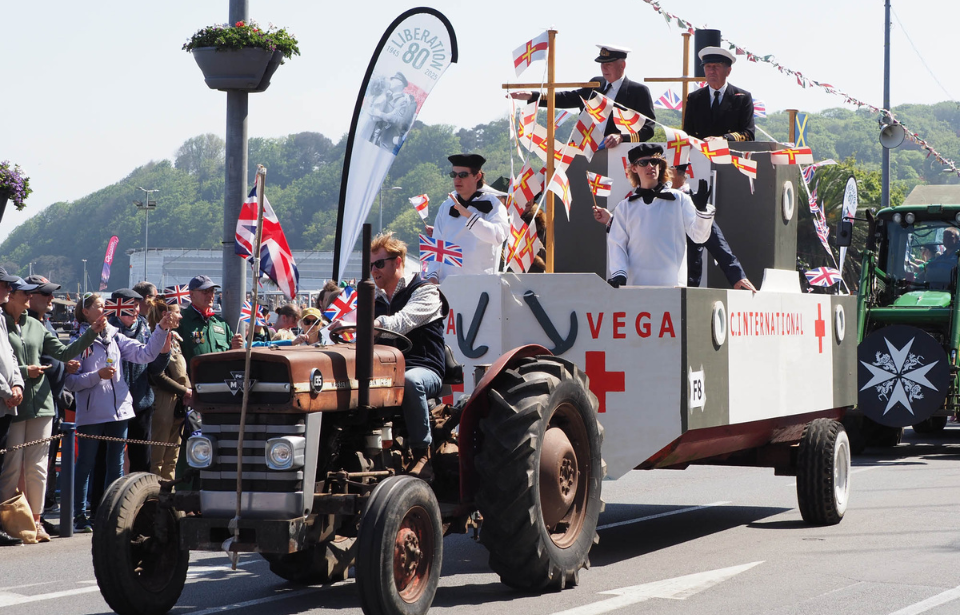*This trip was made possible through the support of the St. Pierre Park Hotel, the Old Government House Hotel, Blueislands and Aurigny.
It’s been 80 years since the tiny island of Guernsey was released from German occupation. Its annual Liberation Day parade and cavalcade is held on May 9 every year – that is uniquely one day later than that of the United Kingdom and Europe itself, which celebrate VE Day on May 8.
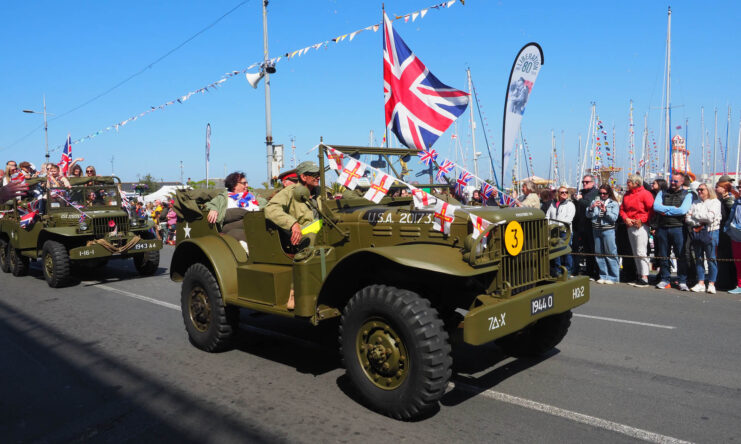
In 1945, the German Army was still in control of the Channel Islands group, including Jersey, Herm, Sark, Alderney and several smaller outer islands. For them, it was viewed as a staging post for a potential invasion of Britain. However, it turned out to be a very expensive cul-de-sac!
After five years, the surrender negotiations for the Bailiwick of Guernsey took place aboard HMS Bulldog (H91), anchored just off St. Peter Port, the capital of Guernsey. The German officer-in-command was summoned to the ship and, later, eight copies of the surrender documents were signed for each of the Channel islands.
Being a subordinate to the commanding officer, he felt he had no authority. However, Friedrich Hüffmeir, the Inselkommandant Guernsey, agreed for his subordinate to sign on May 9. Although the officer wanted to prolong the talks, it was made clear that he should accept the peace offer or risk an onslaught for his men. As like the islanders, they had virtually run out of food.
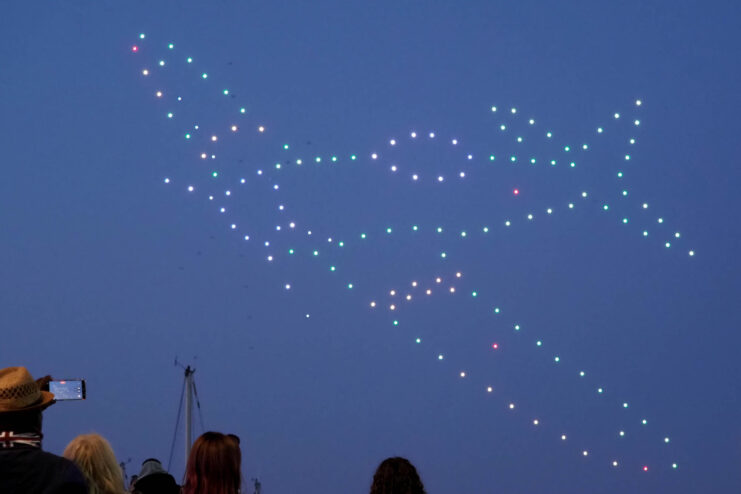
Once the Germans had been swept out of northwest France, re-supply for both islanders and the garrison did reach a stage where starvation was a serious issue. The population, then around 32,000, along with 13,000 troops, struggled to survive. Many creative ways were found on both sides to deal with the diminishing food supply.
The island did have a vital and important supply of Red Cross parcels brought to them by the Swedish Red Cross ship SS Vega, which brought parcels from Canada and New Zealand. Later in the war, some German troops stole these from locals’ houses.
Once France was taken in 1944, the islands were literally bypassed by the British, Canadian and American forces as they headed due east to Paris, Germany itself and, then, Berlin. Sadly, the island of Guernsey and its population had to endure food shortages with little or no help, even though they were just 30 miles away from France and 60 miles from southern England.
The decision not to invade was made by the military, as the focus was to free France.
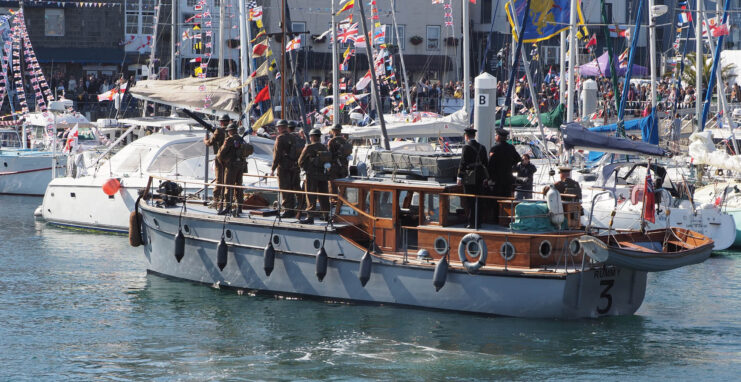
Along with being a major anniversary, 2025 is also a year when those old enough to remember those days are very much starting to run out. You would need to be over 85 years old to be able to recall that momentous moment for Guernsey. Although there are many long-lived residents on the island, their numbers are sadly dwindling.
One such creature that was on the island during the war and is still alive is Timmy the tortoise, who was born in 1941 and later found to be female. She was part of their cavalcade, taken around town in her cage on the roof of her current owner’s car.
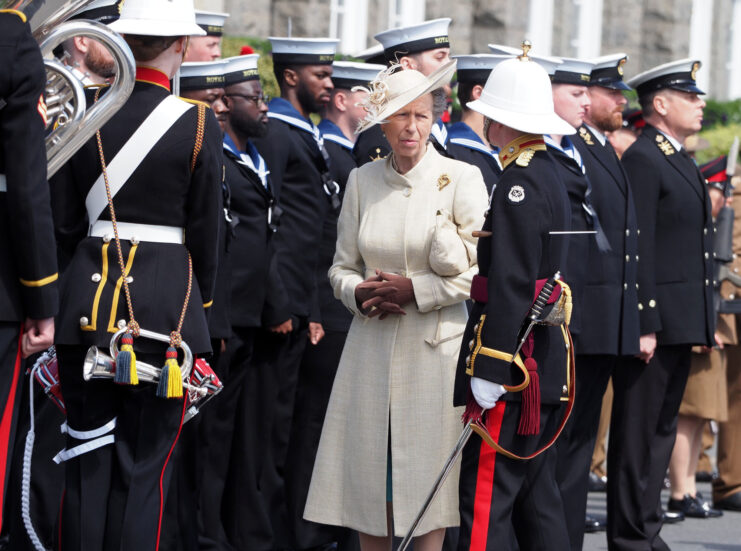
Touring the island by taxi, bus or hired cars, it’s very hard not to still witness the reminders of that period of occupation. In terms of hard structures alone, there are literally hundreds scattered around the coast and all over the island – in total some 800! These include massively reinforced coastal gunnery platforms and observation and radar stations.
You can see places like the Underground Hospital, the German naval signals HQ, Battery Dollmann and the Mirus battery, with its four large caliber guns that could cover a massive area of the sea surrounding both Guernsey and Jersey in their defense.
Over the whole island, you’re never very far from one of their fortifications. It could be a small reinforced mortar position or a vast underground military hospital complex, which was used in 1944 to treat German casualties after D-Day. It was also a store for ammunition.
This was very much all part of the Atlantic Wall, and there was more concrete used here than in any other part of the defensive structure. There is nowhere around Europe that can offer such an interesting insight into the occupation of a British territory by German troops.
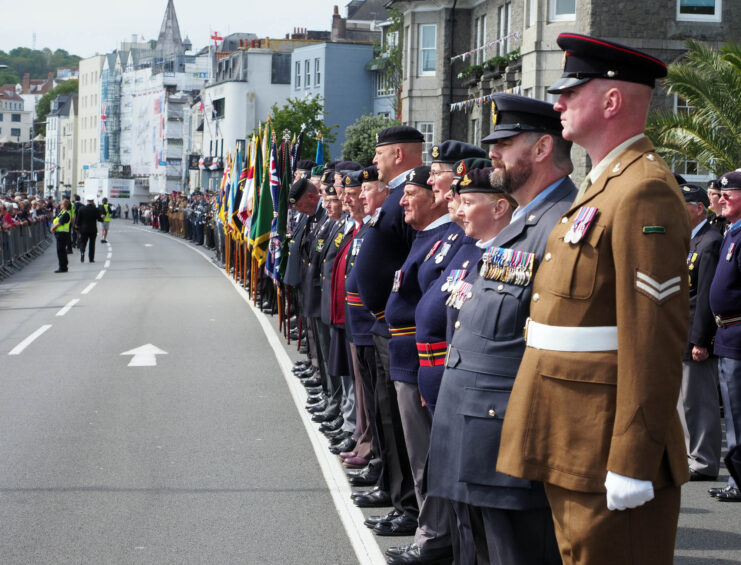
Without doubt, it’s magical to be present at and join in with the islanders on this day of remembrance and commemoration. This year’s event was extended to almost a week, in order to truly illustrate how important to Guernsey May 9 is, and it was complete with a drone show, fireworks and numerous band concerts.
There was no shortage of music, marching and motors of all shapes and sizes parading along the main harbor road through the capital of St. Peter Port. Islanders and visitors lined four, five and six deep as Jeeps, tanks and trucks that were similar to those that streamed ashore along this same road on May 9, 1945, drove past.
Paul Bourgaize, Tony Froome and Chris Le Tissier were driving their military vehicles in the Liberation Day cavalcade, too! A visit on Liberation Day itself shows a time when the whole island is united to still demonstrate how, in historical terms, this occasion is still held precious in the hearts and minds of all Guernsey residents.
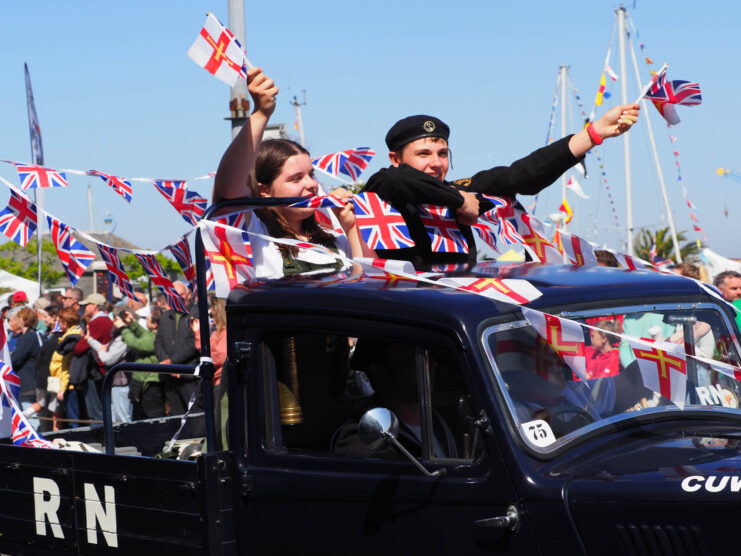
While it’s not quite a place fit for a queen, the Liberation weekend had a special British Royal visit. Princess Anne and Adm. Tim Laurence were shown around Mirus by volunteers from Festung Guernsey, a special private visit to where the four giant artillery pieces were located.
This quartet of fire power was placed by the Germans on a high vantage point. The two-meter-thick walls, roof and four giant gun bowls were built using slave and forced labor, with individuals mixing and pouring concrete non-stop for several months.
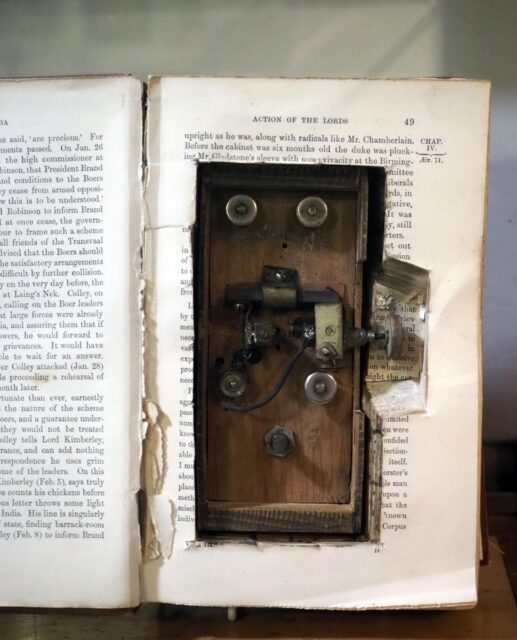
As a schoolboy, Richard Heaume explored many of the bunkers. With the items collected from them, he established the German Occupation Museum. Richard is rather old school, so it’s cash only at this location, along with his bunker at Pleinmont, which he returned to how it would have looked in World War II.
He also restored the rangefinder tower at Pleinmont and the casemate bunker at Fort Hommet. No detail is too small to be included, it seems.
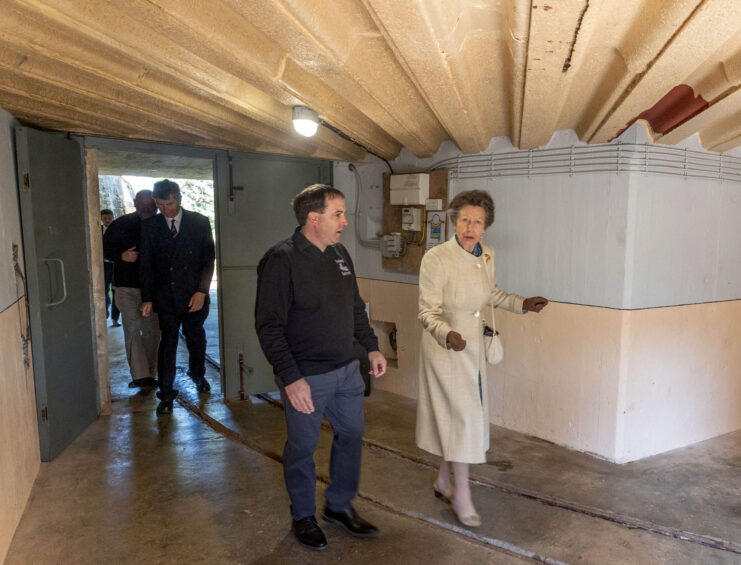
Many of the other former military bunkers are open to visitors, and they’re looked after by Guernsey residents who are keen to show what an unusual place the island was under German occupation. Festung Guernsey – or Fortress Guernsey – volunteers continue to uncover bunkers and buildings all over the island.
Volunteers, like experienced professional accredited tour guide Amanda Johns, have often found themselves chipping rust from steel roof supports, digging to expose access steps to one of their newest facilities or even bailing out flooded gun emplacements at places like the Mirus gun battery.
They are literally digging out history from under their feet with a spade and various tools, in order to expose them, even now after 80 years of being buried and unexplored! This gives a unique insight into the only area of the British Isles that fell under German occupation during the Second World War.
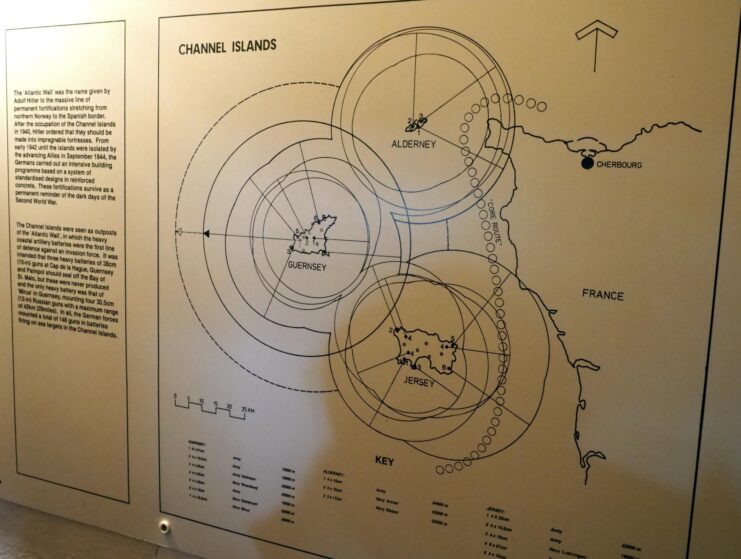
Overall, the state of preservation of the many bunkers, towers and fortifications puts Guernsey in a unique position. In the end, without the British having to take or bomb the island by force, this meant that many constructions were left virtually in working condition as the day the Germans left.
From tiny documents and personal letters to massive artillery pieces, the extensive number of items that help tell the story of the occupation on Guernsey are very much well worth visiting and seeing.
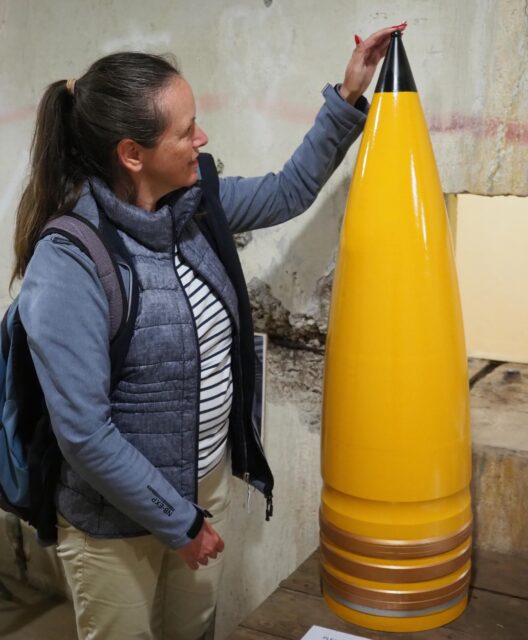
For general tourism purposes, Guernsey has many charming attractions and experiences. Quaint churches and the rural escapes are close at hand, too. I also highly recommend the many beaches and taking in the general ambience of the island.
More from us: The Tank Museum Announces Cold War Vehicle Line-Up for TANKFEST 2025
Also unique is its own native breed of Guernsey cattle that produce the rich golden yellow milk that the island is so famous for.
